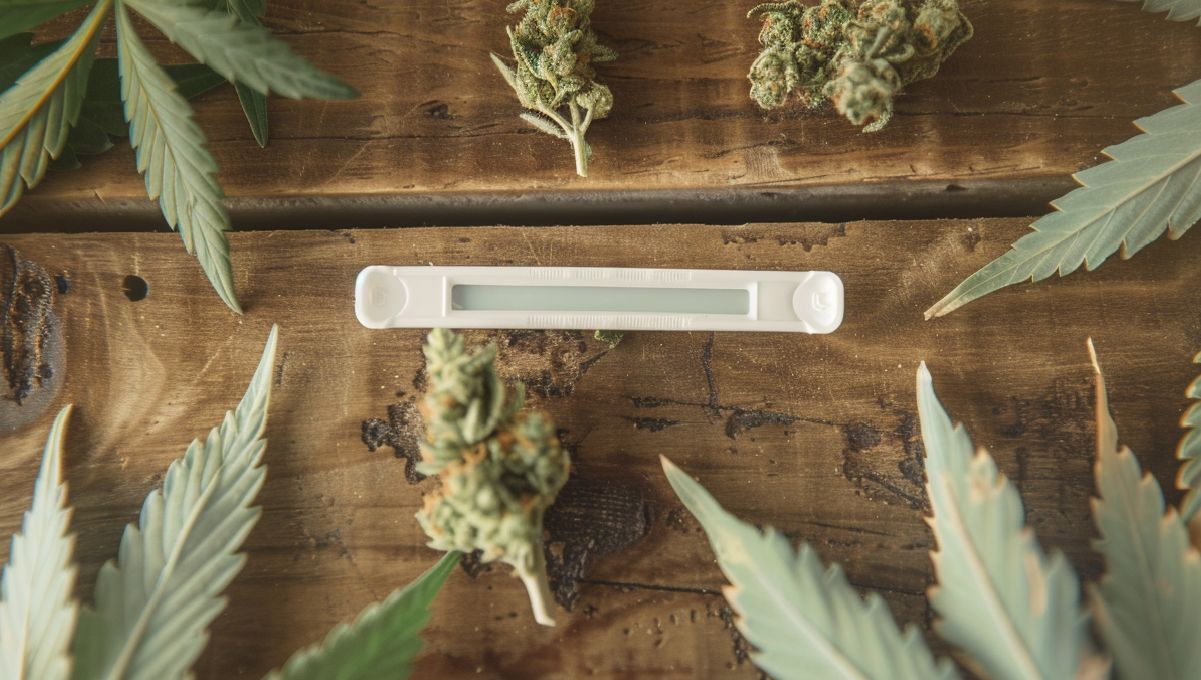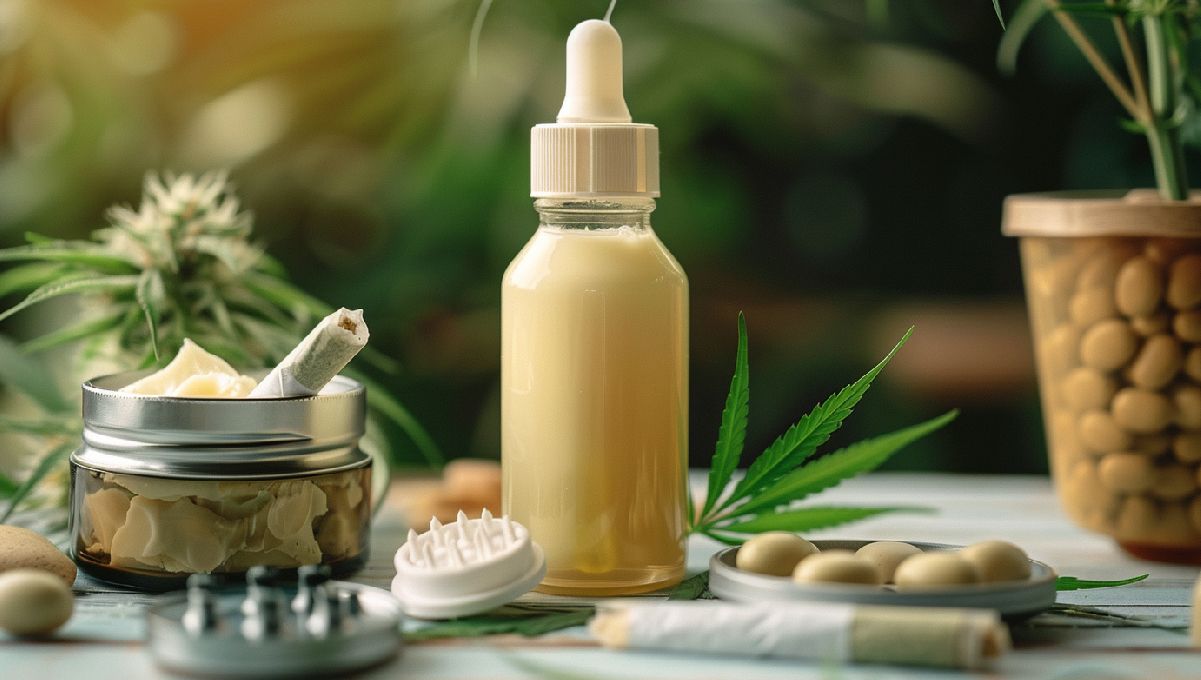Women and Weed: A Comprehensive Guide to Cannabis and Women's Health

- 1. Recreational use in men and women: differences and risks
- 1. a. Higher potential for abuse in women vs men
- 1. b. Difference in acute effects, including side effects
- 1. c. Different withdrawal symptoms in women vs men
- 2. Fertility, pregnancy, and breastfeeding
- 2. a. Cannabis use and fertility
- 2. b. Cannabis use and pregnancy
- 2. c. Cannabis use and breastfeeding
- 3. Medical marijuana use for women-specific issues
- 3. a. Cycle-related issues
- 3. b. Female orgasmic disorder
- 3. c. Endometriosis
- 3. d. Menopause symptoms
- 4. Conclusion
Cannabis, once an illicit substance shrouded in controversy, is now increasingly accepted and legalized in many jurisdictions. This shift has led to a significant change in its usage patterns, with more women turning to cannabis for various reasons. Although men still outnumber women in cannabis use, the gender gap is narrowing.
Interestingly, women react differently to cannabis compared to men, both in acute symptoms and dependency, as well as withdrawal. Moreover, cannabis has unique implications for women's health due to the presence of endocannabinoid receptors throughout the female reproductive tract. Given these differences and potential health implications, it is crucial to explore the issue of cannabis use in women. This article aims to provide a comprehensive guide to cannabis and women's health, delving into the potential benefits, risks, and everything in between.
Recreational Use in Men and Women: Differences and Risks
Every person reacts to cannabis differently, but there are some general patterns that distinguish male and female use. One of these patterns is the potential for abuse and dependency.
Higher Potential For Abuse in Women vs Men
The accepted criteria for diagnosing cannabis use disorder (CUD) may not be scientifically robust and more of a remnant of the war-on-drugs era, but according to them, CUD affects approximately 10% of cannabis users, and women may be more susceptible to it than men.
Research suggests that women transition more quickly to cannabis use dependence compared to men, a process often called “telescoping”. This means that while men and women may start using cannabis at the same age, women are likely to develop dependency faster. A study found that the time from the first use of cannabis to the onset of CUD was shorter among women (4.7 years vs. 5.8 years for men).
Moreover, women may experience greater severity of cannabis dependence. Although men are more likely to be diagnosed with CUD, women report more severe symptoms, including greater withdrawal intensity and more co-occurring mental health issues. This could be due to the influence of sex hormones specific to women, but more research is needed to fully understand the biological mechanisms underpinning these sex differences.
Difference in Acute Effects, Including Side Effects
Men and women may experience different acute effects when using cannabis. Men are more likely to report increased appetite, improved memory, enthusiasm, altered time perception, and increased musicality when high. On the other hand, women are more likely to report loss of appetite and a desire to clean when high.
Early evidence suggests that women may be more sensitive to cannabis or cannabinoids in general. This is supported by both animal and human studies. Women report greater subjective effects at lower doses of THC, indicating a higher sensitivity to the drug.
Preclinical studies on rodents show that females are more sensitive to the rewarding and reinforcing effects of cannabinoids. They acquire self-administration of cannabinoids faster, self-administer greater amounts, and are slower to extinguish this response. Females also show greater cue/stress induced reinstatement and are more sensitive to the acute sedative, anti-nociceptive, and motoric effects of cannabinoids.

Clinical studies on humans have mixed results. While some studies found no sex-related differences in acute subjective effects, others reported greater THC-induced effects in women, and some in men. Women are generally more sensitive to the subjective effects of low doses of THC, and men to higher doses. Women also tend to report stronger rewarding effects and are more likely to request discontinuation of the study despite no differences from men in subjective ratings of "high" or tachycardia.
In summary, while more research is needed, current studies suggest that women may be more sensitive to the acute effects of cannabis and may experience different effects than men.
Different Withdrawal Symptoms in Women vs Men
When it comes to cannabis withdrawal symptoms, women may experience them differently than men. Research findings are mixed, with some studies suggesting that women report experiencing more withdrawal symptoms than men, and others finding no significant sex differences.
One study found that women reported experiencing more withdrawal symptoms than men (7.9 symptoms vs. 6.2 symptoms, respectively). Women were more likely to report irritability, violent outbursts, and nausea during their last quit attempt compared with men.
The severity of symptoms reported did not differ significantly between women and men. However, women who reported experiencing nervousness/anxiety, restlessness, or increased aggression during their last quit attempt reported that these symptoms were more severe compared with men who also reported these symptoms.
Men were more likely than women to report insomnia and vivid dreams during periods of withdrawal, while women were more likely than men to report nausea and anxiety as withdrawal symptoms.
It's worth noting that some studies that failed to detect significant sex differences in withdrawal symptoms reported that the men in their samples reported greater use and dependence on cannabis. This suggests that women's decreased cannabis use and dependence may help explain the lack of significant sex differences in withdrawal symptoms in those studies.
All in all, it's important for women who are considering quitting cannabis to be aware of these potential symptoms and seek appropriate support to manage them.
| Potential Benefits | Potential Risks |
|---|---|
| Relief of menstrual cramps | Increased risk of cannabis use disorder |
| Improved sexual function | Negative effects on fertility and pregnancy |
| Management of endometriosis symptoms | Increased risk of anxiety and depression |
| Relief of menopause symptoms | Potential interactions with other medications |
Fertility, Pregnancy, and Breastfeeding
The effects of cannabis on female reproductive health are still not well understood due to limited and conflicting research. Most of the available studies are observational, rely on self-report, and have been performed long ago, when marijuana products were much lower in THC than they are now.
Cannabis Use and Fertility
The available human literature on the effects of marijuana use on female reproductive health is limited and largely derived from women undergoing assisted reproductive technology rather than on healthy subjects. Studies on the effects of THC on fertility have shown mixed results. Some studies suggest that marijuana use may negatively impact fertility by affecting hormonal levels and ovulation, while others find little association between marijuana use and spontaneous conception rates.

Early studies on animals showed that acute exposure to THC could delay ovulation. Chronic exposure to THC in nonhuman primates resulted in anovulation, abnormal serum hormones, and increased menstrual cycle length. However, with tolerance to THC, normal menstrual cyclicity, ovulation, and hormone levels were eventually restored.
Human studies have shown that women who smoked marijuana within one year of trying to conceive were twice as likely to have infertility due to ovulatory dysfunction. However, other studies found little association between marijuana use and time to conception.
Cannabis Use and Pregnancy
Cannabis compounds can cross the placenta and reach the fetus, potentially affecting its development. Growing evidence from human and animal studies suggests that maternal cannabis use can have negative impacts on the fetus. Frequent cannabis use during pregnancy has been linked to low birth weight and other adverse birth outcomes.
Moreover, children and young adults exposed to cannabis in utero may experience various behavioral effects. These can include attention deficits, emotional disturbances, increased hyperactivity and impulsivity, sleep disorders, and a higher likelihood of substance use. Given these risks, pregnant women should be advised to abstain from using cannabis. For those who are unable to quit completely, harm reduction options should be offered.
Women who use cannabis to manage symptoms such as morning sickness should be encouraged to use accepted and better-researched alternatives instead. It's also important to note that the effects of cannabidiol (CBD) use during pregnancy or breastfeeding are currently unknown. Clinical and preclinical studies are urgently needed to evaluate the safety of CBD use during these periods.

Cannabis Use and Breastfeeding
Cannabis use while breastfeeding is a growing concern due to its increasing recreational and medicinal use among women of reproductive age. The passage of THC, the main active psychoactive component of cannabis, into breast milk has not been extensively studied. However, one study suggested that THC is excreted into human breast milk in moderate amounts, with a milk-to-plasma ratio of up to 8:1 in heavy users.
Chronic use of cannabis can lead to the accumulation of THC in breast milk to high concentrations. This is concerning because a baby's brain is still forming, and THC could theoretically affect brain development. A study from 1990 suggested that exposure to THC through breast milk in the first month of life could result in decreased motor development at 1 year old. However, no studies have adequately addressed the effects on long-term neurodevelopment.
Lethargy, less frequent feeding, and shorter feeding times are other observations reported after babies' exposure to THC through breast milk. Additionally, a mother's ability to nurse and care for her child might be compromised because marijuana can affect mood and judgment.
Due to insufficient long-term data on the outcome of infants exposed to cannabis via breastmilk, health professionals' opinions on the acceptability of breastfeeding by cannabis-using mothers vary. In general, professional guidelines recommend that cannabis use should be avoided by nursing mothers. The effects of cannabidiol (CBD) use during breastfeeding are unknown, and more research is needed to evaluate its safety during this period.
Medical Marijuana Use For Women-Specific Issues
Medical marijuana may be helpful for women's health issues, although studies have shown that sex differences in the conditions for which medical cannabis is used and its efficacy are minimal.
Cycle-Related Issues
Many women experience the following symptoms during their menstrual cycle:
- anxiety,
- mood swings,
- irritability,
- cramps.
Anecdotal reports suggest that CBD can help with anxiety, THC can help with mood swings, irritability, and cramps, and both CBD and THC can help relax the uterine muscle where cramps occur, providing relief for many PMS symptoms.
As an instance of more rigorous research, a recent study found that CBD may indeed be helpful in managing menstrual-related symptoms. Participants in the study took CBD softgels for three months and reported reductions in symptoms such as irritability, anxiety, and stress. Depression scores were not affected. These findings suggest that CBD may be a helpful option for women looking to manage their menstrual-related symptoms. However, more research is needed to compare the effects of CBD to a placebo and to optimize CBD consumption for reducing menstrual-related symptoms.

Female Orgasmic Disorder
Female orgasmic disorder (FOD) is a common condition that affects up to 41% of women worldwide. At least four U.S. states are considering adding FOD as a specific qualifying condition for medical marijuana, with supporters pointing to a growing body of research showing that cannabis can significantly improve orgasmic frequency, ease, and satisfaction in people with FOD.
Indeed, there are theories supporting the hypothesis that cannabis may help women who have lifelong, acquired, or situational FOD. The dishabituation theory suggests that THC could help women get rid of the habit of being distracted during sex, which may explain why women who had never experienced an orgasm discovered they could orgasm when using cannabis before sex.
The neuroplasticity theory proposes that cannabis and endocannabinoids play a role in neural development processes, including brain cell growth and neuroplasticity, which may explain why some women learn to orgasm while using cannabis before sex. The amygdala reduction theory proposes that cannabis can reduce activity in the amygdala, a part of the brain associated with fear responses to threats, which may improve sexual experiences and lead to improved orgasm and satisfaction.
Endometriosis
Endometriosis is a chronic condition that affects around 10-14% of women and is challenging to manage. Research suggests that the gut microbiota and the endocannabinoid system (ECS) may play a role in the development and progression of the disease. The endocannabinoid system's interaction with chemicals from cannabis, including THC and CBD, suggests a mechanism for how cannabis may alleviate pelvic pain in women with endometriosis.
Indeed, cannabis has been found to be effective for managing endometriosis symptoms, particularly pelvic pain, gastrointestinal issues, and mood. A study of 252 women with endometriosis found that inhaled forms had higher efficacy for pain, while oral forms were superior for mood and gastrointestinal symptoms. Another study found that one in ten Australian women with endometriosis reported using cannabis to manage their pain and other symptoms, with cannabis being rated as the most effective self-management technique for managing pain. Women who reported higher levels of pain were more likely to use cannabis than those with milder symptoms.
Menopause Symptoms
Menopause is a natural stage in a woman's life that can cause various symptoms such as hot flashes, sleep disturbances, mood changes, and anxiety. Some women are turning to cannabis to manage these symptoms. A cross-sectional survey of women aged 35 and over in Alberta, Canada found that 34% of respondents reported currently using cannabis, with over 75% using it for medical purposes. The most common reasons for current use were sleep (65%), anxiety (45%), and muscle/joint aches (33%). Of the current users, 74% indicated that cannabis was helpful for symptoms. Current cannabis users were more likely to report experiencing menopause symptoms compared with non-users.

Another survey of medical cannabis use during perimenopause and postmenopause found that 86.1% of participants reported current cannabis use, with 78.7% using it for menopause-related symptoms. The most common modes of use were smoking (84.3%) and edibles (78.3%), and the top menopause-related symptoms for cannabis use were sleep disturbance (67.4%) and mood/anxiety (46.1%). Perimenopausal participants reported significantly worse menopause-related symptomatology, including greater burden of anxiety and hot flash symptoms, and increased use of cannabis to treat menopause-related mood/anxiety symptoms relative to postmenopausal participants.
These studies suggest that some women are using cannabis to manage menopause symptoms, particularly sleep disturbances and mood/anxiety symptoms. However, further research is required to assess the safety and efficacy of cannabis for managing menopause and develop clinical resources for women on cannabis and menopause.
Conclusion
Cannabis use among women is increasing, as it becomes more accepted and legalized. Women react differently to cannabis compared to men, and the substance has unique implications for women's health. Though the effects of cannabis on female reproductive health are still not well understood, there’s a growing concern for pregnant and breastfeeding women who use cannabis for medical or recreational purposes.
If you are a woman considering cannabis use for medical purposes or unwilling to stop the use for the duration of pregnancy and lactation, it is important to be aware of the potential risks and benefits and to seek appropriate support to manage any potential symptoms or side effects.












Comments